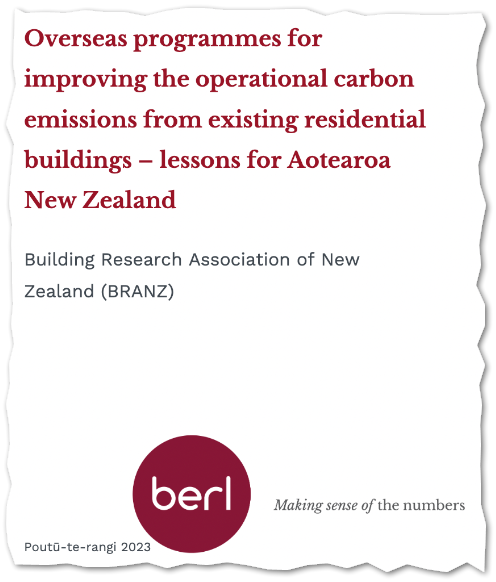Large-scale retrofit programmes to improve New Zealand housing would generate huge benefits, according to a recent report by BERL: $50 billion in health and energy savings and over $116 billion in broader well-being benefits, depending on the level of investment in retrofitting homes.

The report examined international retrofit projects and investigated the economic impacts of a large scale programme. Three cases were examined. In my view, the report’s key contribution is the modelling that forecasts how a large retrofit programme might impact the country’s economy. It considered potential investments of $26 billion or $58 billion in residential construction and related industries up to 2050.
I recommend reading the full report but here’s my summary on the 10 key lessons BERL identified from the overseas examples it considered.
- Ensure retrofits are affordable and low-risk through grants, loans and project management assistance.
- Simplify the process with a single point of contact and clear expectations.
- Improve the entire home, not just the heating system.
- Address varying financing needs of homeowners, including government assistance and Māori-specific options.
- Focus on overall benefits, such as health and productivity, not just energy savings.
- Include project managers to reduce complexity and improve outcomes.
- Consider using energy performance certificates to track progress and effectiveness.
- Establish trust by guaranteeing quality and approved contractors.
- Create programmes that can withstand changes in government and policy.
- Implement a pilot deep retrofit programme to develop insights and inform a larger-scale programme.
However, it’s important to note that energy performance certificates are particularly problematic due to the risk of a performance gap in energy models. We can build energy models that accurately predict the energy consumption of the building but that requires knowledge and time: there’s a cost involved. To my knowledge this has been cut short overseas so that the certifications can’t be trusted. We know how to do deep energy retrofits and do them well—it’s called EnerPHit—the issue is scale. We have to ensure the retrofits keep performing as expected once the work rolls out beyond the early adopters
Till Cottage is a good example of a deep energy retrofit which exceeded EnerPHit and gained certification to the full Passive House standard. The challenge is how to lift knowledge, skills and motivation across far more of the building sector so that we can do tens of thousands of comparable retrofits a year, not a handful.
The report’s final recommendations for improving Aotearoa New Zealand’s residential housing stock were spot on. These included implementing a scalable pilot retrofit programme, understanding vulnerable households’ needs, expanding the Warmer Kiwi Homes programme and creating a comprehensive, cohesive plan aligned with emissions targets. Additionally, the recommendations emphasise collecting insights from the Kāinga Ora retrofit programme, addressing the needs of Māori, Pacific people and disabled occupants, and recognising the wide-ranging benefits of implementing a wave of renovations in terms of economy, health, wellbeing, productivity and climate resilience.
For reference:
The full report ER79 Overseas programmes for improving the operational carbon emissions from existing residential buildings – lessons for Aotearoa New Zealand (2023). Free download.